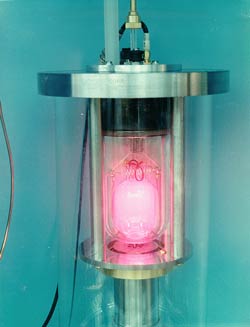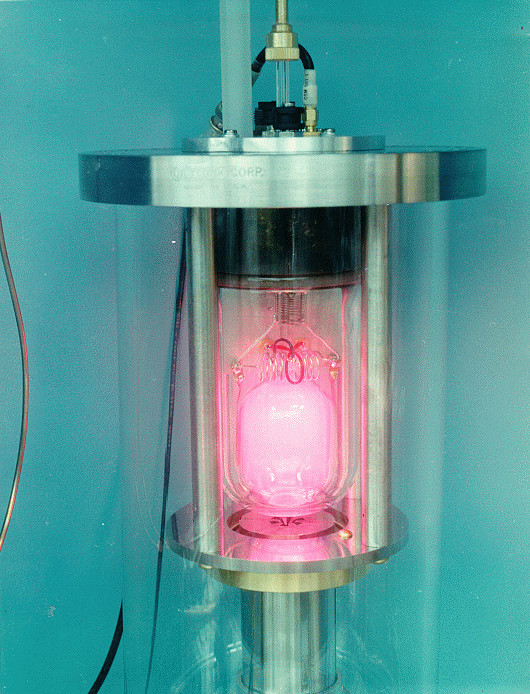Taking Microwaves for a Spin
Most lasers operate at infrared and visible wavelengths, but the first laser, developed in 1954, was actually a maser–it used microwaves. In the 15 September PRL, researchers in the Netherlands propose a new design for a maser that would work by harnessing the spins of electrons. It would offer a simple way to shrink the maser to microelectronic scale and would be a new use for “spintronics,” a strategy for achieving improved electronics by manipulating electron spins.
Conventional electronics use an electron’s charge to encode information in a binary format–the “on” or “off” states that translate to the zeroes and ones familiar to computer programmers. Spintronics, on the other hand, are based on an electron’s magnetism–how its spin aligns, either “up” or “down,” with respect to a magnetic field.
Although several successful devices based on spintronics are now in use, “there haven’t been a whole lot of really new device proposals,” says Steven Watts of the University of Groningen in the Netherlands. “On-chip microwave amplifiers are very common, which are related to masers,” he says. But a maser is “something that can self-sustain.” Masers used today are either large systems or need to be cooled to liquid helium temperatures.
In a conventional laser, energy is pumped into the atoms of a gas or solid to excite them to a high-energy state. The atoms emit photons when they drop back to the ground state, and those photons can stimulate other excited atoms to emit. The whole system can become a self-sustaining amplifier of light–a laser–only if enough energy is pumped in to achieve a so-called population inversion, where there are more atoms in the excited state than in the ground state.
Watts and his Groningen colleague Bart van Wees propose that a maser could be created with a three-layer sandwich, with a ferromagnetic material like iron on top, a paramagnetic material like aluminum on the bottom, and a thin layer of electrical insulator separating the two. Applying a magnetic field pointing downward would create two electron energy states: a ground state for spins pointing down and an excited state for spins pointing up. Electrons could be excited to the higher-energy, spin-up state by sending in microwave radiation.
But the incoming microwaves would not generate enough excited electrons to get the population inversion needed for a maser. So the researchers propose supplementing the excited electron population with a “spin current” from the ferromagnet into the paramagnet–that is, a current whose electrons have a preferred spin-up orientation. The team calculates that with this boost, the paramagnet would contain enough excited electrons for maser action to start spontaneously, and the sandwich would emit amplified, coherent, microwave radiation.
“The physics are quite interesting,” says Stuart Wolf of the University of Virginia, but he says it’s not clear what kind of practical use such a maser might have. Watts agrees that the spin maser is currently a solution in search of a problem, but he’s hopeful that a chip-sized maser will be useful in the future, since microwaves are already part of many electronic devices, such as cell phones.
–Corinna Wu
Corinna Wu is a freelance science writer in Alexandria, Virginia.





